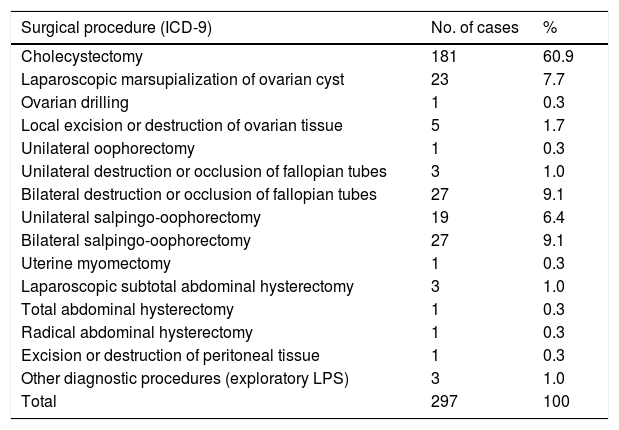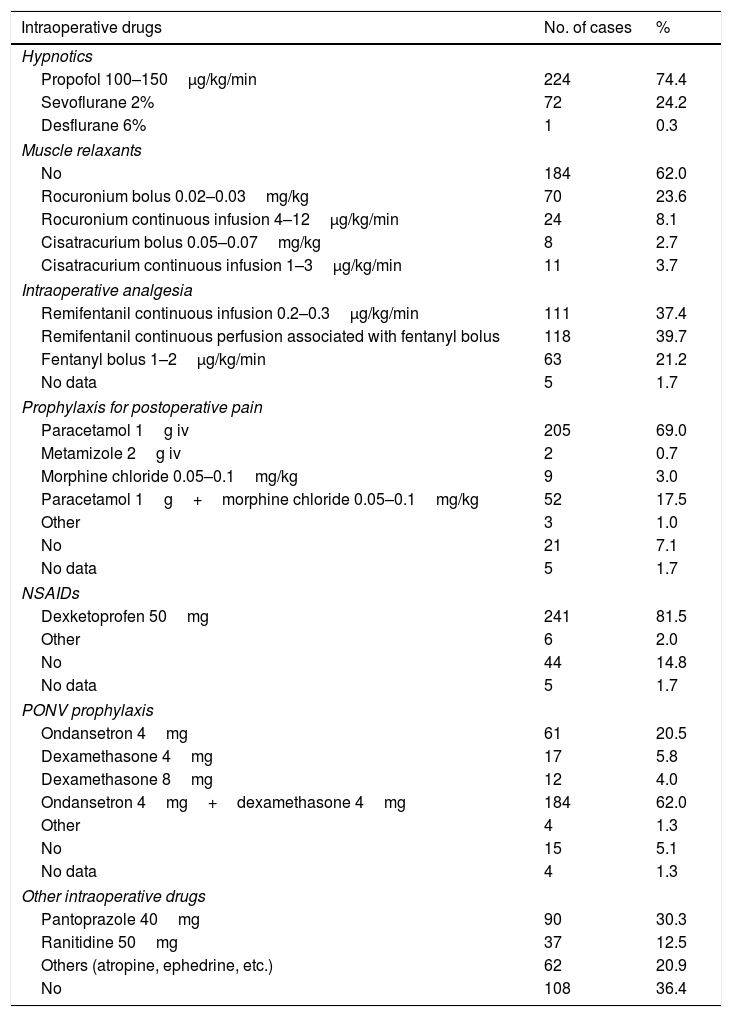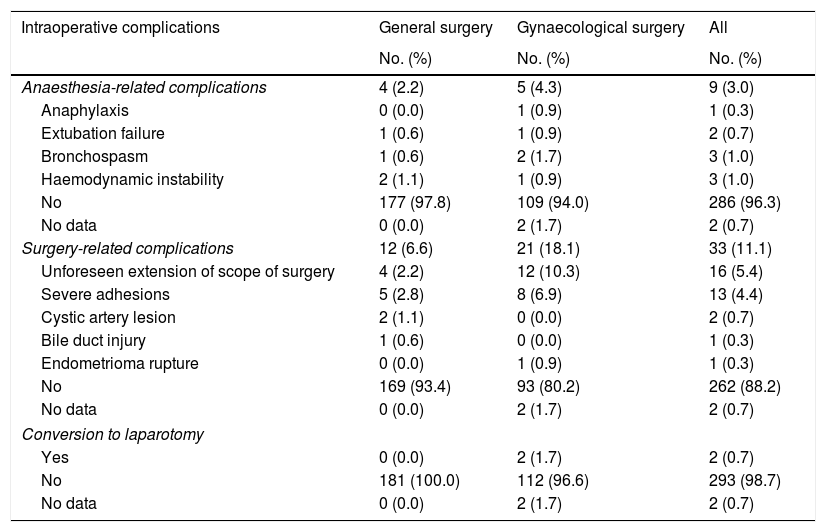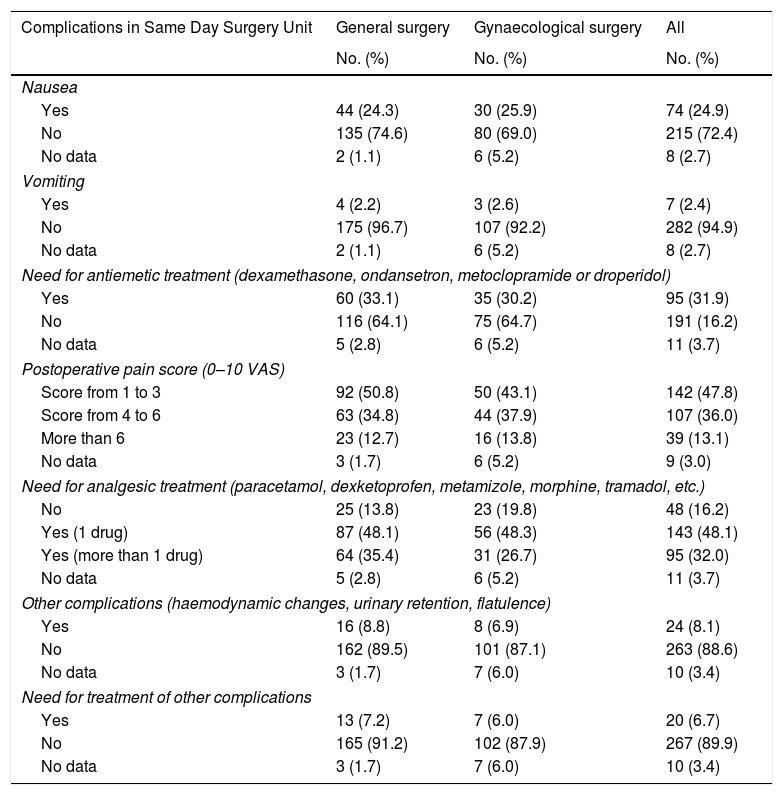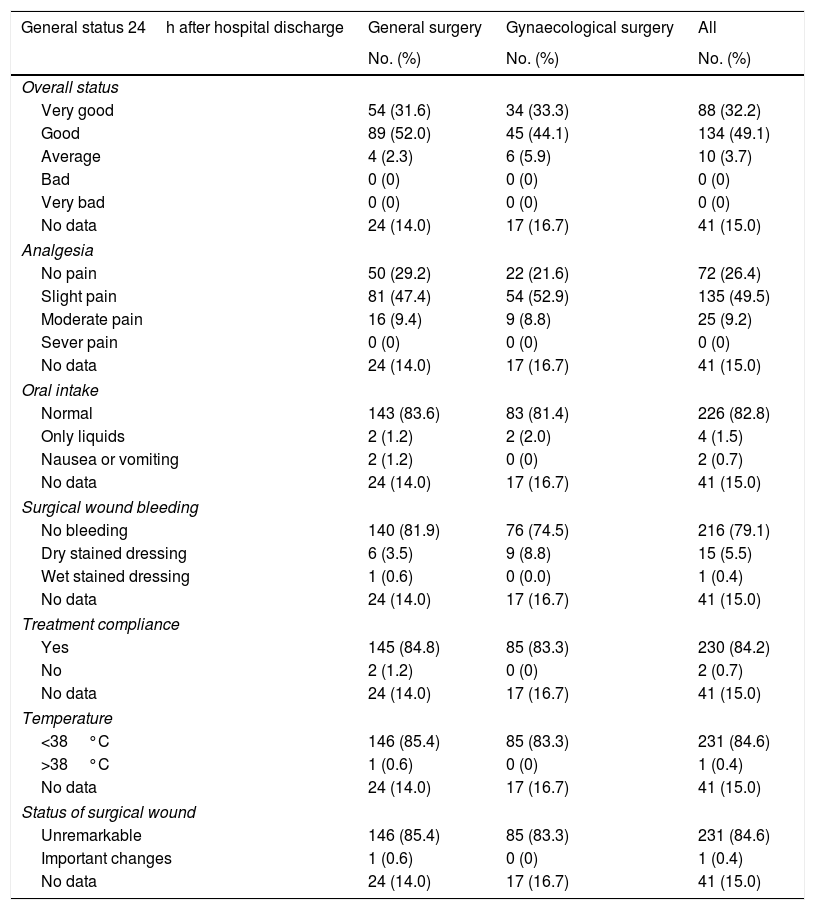Both postoperative pain and postoperative nausea and vomiting are major factors that determine the time and quality of recovery in laparoscopic surgery.
ObjectiveTo determine the perioperative factors that contribute to the appearance of postoperative pain and postoperative nausea and vomiting in outpatient laparoscopic surgery.
Material and methodsA prospective study was conducted on a cohort of 297 patients undergoing laparoscopic ambulatory surgery. A record was made of preoperative factors (usual medication, anaesthetic risk, etc.), intraoperative (surgical and anaesthetic times, drugs, CO2 pressure, etc.), and postoperative factors (major and minor complications, recovery times, etc.). As dependent variables, the postoperative symptoms considered were, nausea, vomiting, and/or postoperative pain.
ResultsConsidering as a combined variable the occurrence of nausea, vomiting or moderate/severe pain (4 or more points on a visual analogue scale), one or more of these symptoms occurred in 58.7% of the patients (95% CI: 52.8–64.4). Using a logistic regression, the variables associated with the appearance of symptoms were: female gender (OR: 3.4), waiting time over 45min prior to surgery (OR: 4.9) and no anti-emetic prophylaxis (OR: 12.2).
ConclusionsIn patients undergoing ambulatory laparoscopic surgery, one in 4 had postoperative nausea and vomiting, and approximately half of moderate-intensity pain before discharge. Considering the overall the occurrence of pain and/or postoperative nausea and vomiting, these symptoms affect more than half of the patients being operated on, and are more frequent in women and in those who have to wait to access the operating room.
Tanto el dolor como las náuseas y vómitos postoperatorios constituyen condicionantes principales del tiempo y la calidad de la recuperación en cirugía laparoscópica.
ObjetivoDeterminar los factores perioperatorios que contribuyen a la aparición de dolor y de náuseas y vómitos postoperatorios en cirugía laparoscópica ambulatoria.
Materiales y métodosEstudio prospectivo de una cohorte de 297 pacientes intervenidos mediante cirugía laparoscópica ambulatoria. Como variables de estudio se consideraron: a) factores preoperatorios, incluyendo medicación habitual y riesgo anestésico; b) intraoperatorios, entre otros tiempos quirúrgico y anestésico, fármacos y presión de neumoperitoneo y c) postoperatorios, como complicaciones mayores o menores y tiempos de recuperación. Como variables dependientes se consideraron los síntomas postoperatorios náuseas, vómitos y dolor.
ResultadosConsiderando como variable combinada la aparición de náuseas, vómitos o dolor moderado/severo según una escala visual analógica, presentaron uno o más de estos síntomas el 58,7% de los pacientes (IC 95%: 52,8–64,4). Mediante regresión logística, las variables asociadas a la aparición de síntomas fueron: sexo femenino (OR: 3,4), tiempo de espera previo a quirófano superior a 45min (OR: 4,9) y ausencia de profilaxis antiemética (OR: 12,2).
ConclusionesEn pacientes operados mediante cirugía laparoscópica ambulatoria, uno de cada 4presenta náuseas y vómitos postoperatorios y la mitad presentan dolor de intensidad moderada antes del alta. Considerando globalmente la aparición de dolor o náuseas y vómitos postoperatorios, estos síntomas afectan a más de la mitad de los pacientes y son más frecuentes en mujeres y en quienes más tardan en acceder al quirófano.





